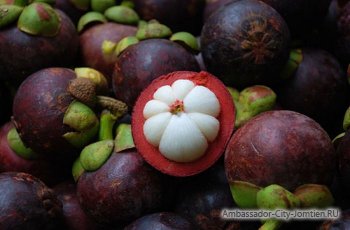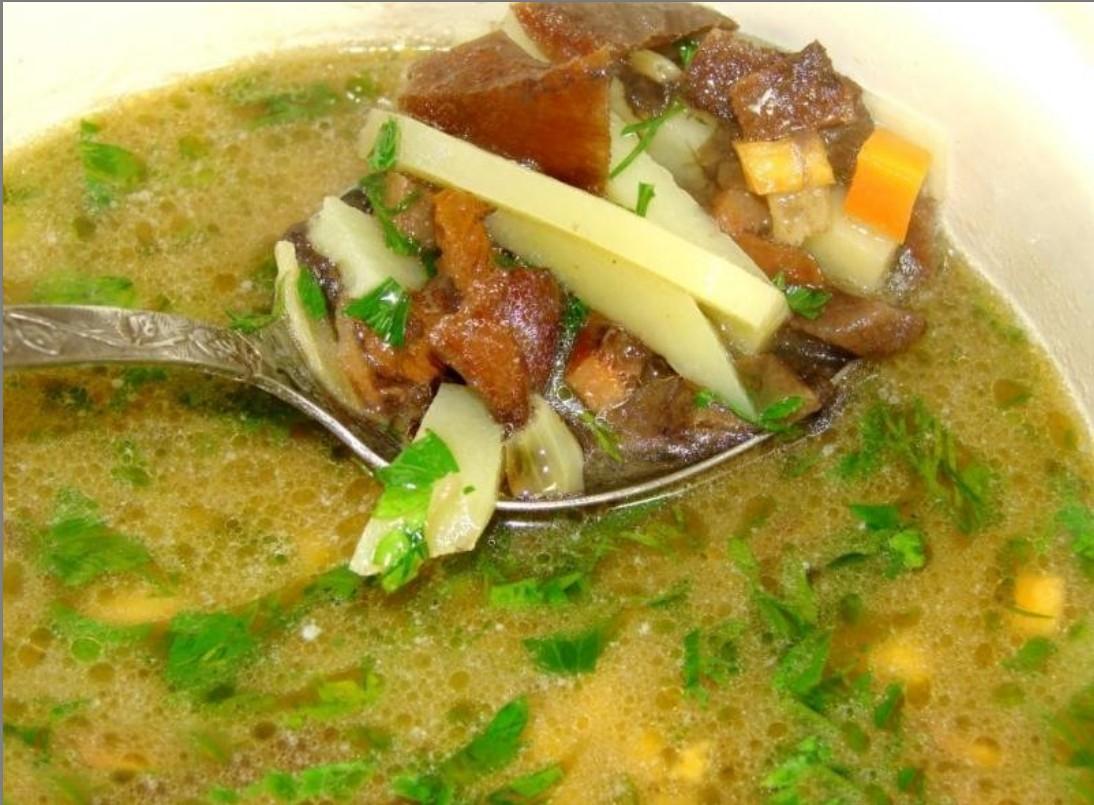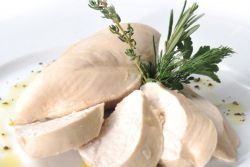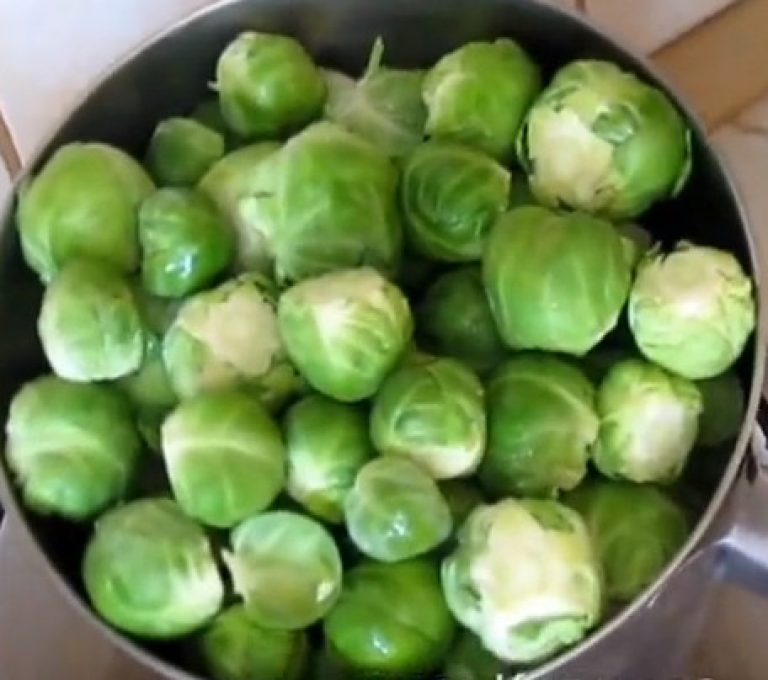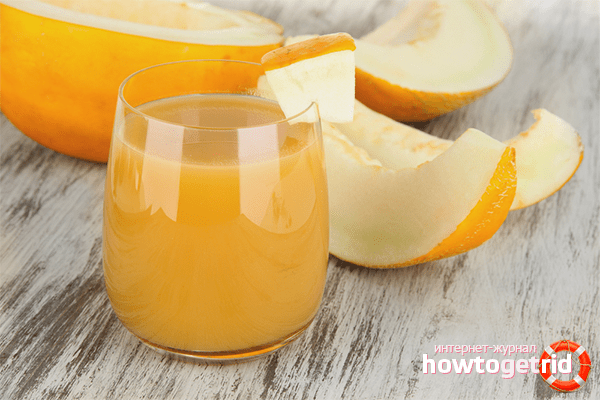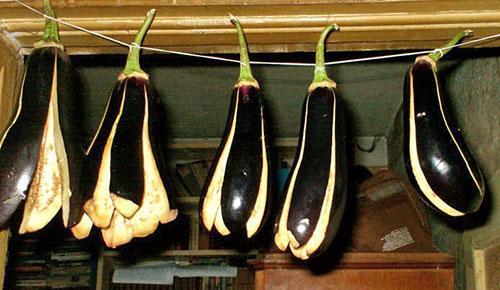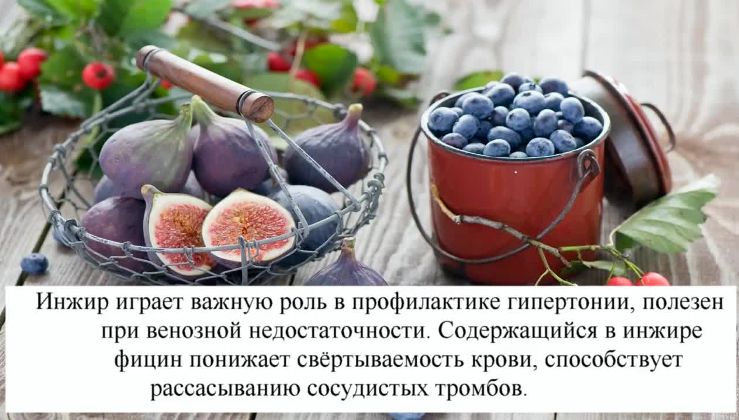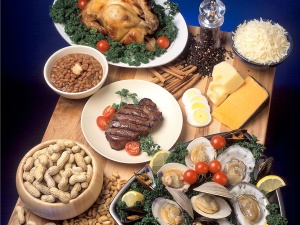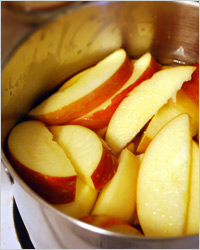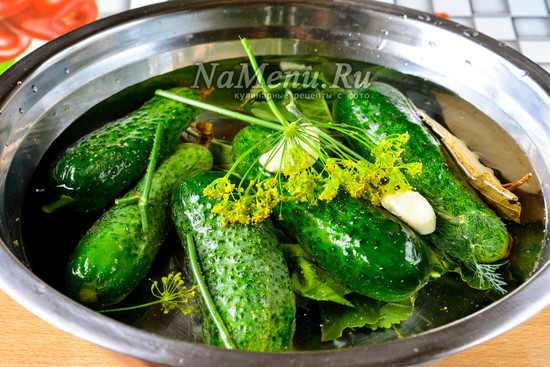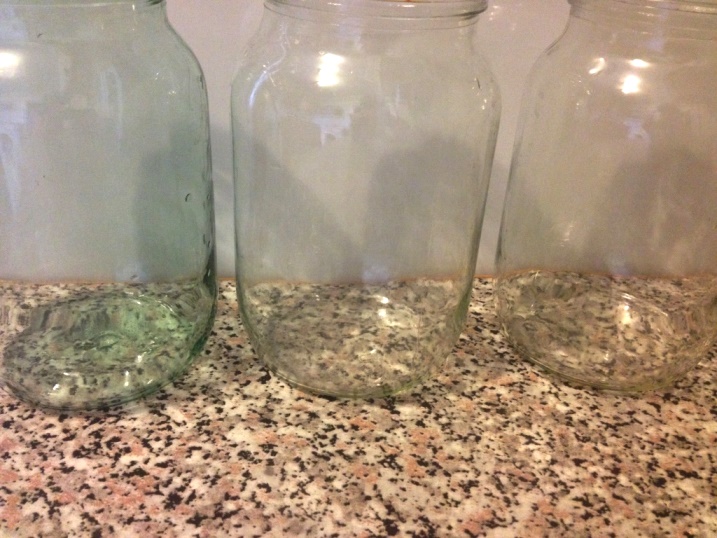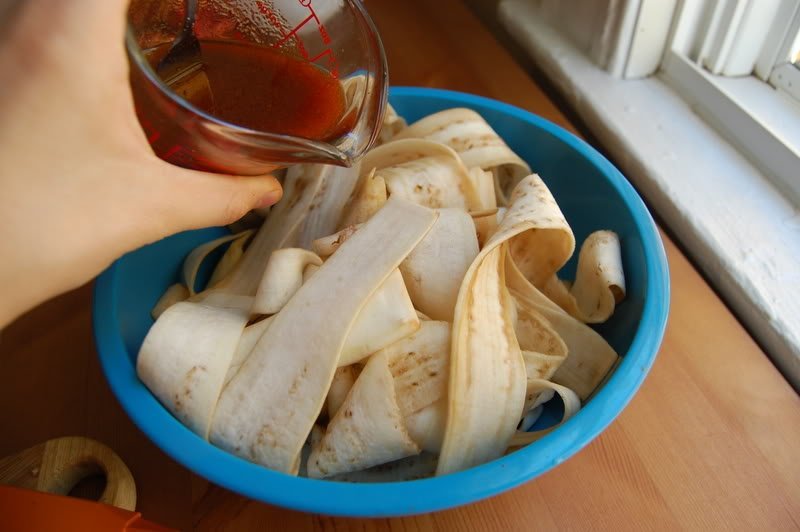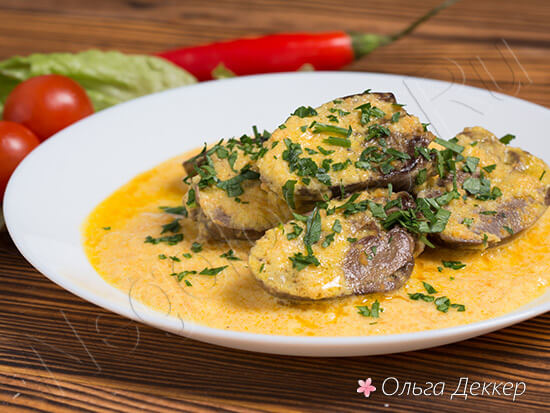Cold mushroom ambassador. Salted mushrooms
Fans of the “silent hunt” often encounter such a situation when they can feed all the relatives, neighbors and acquaintances with the collected mushrooms, and several more buckets will remain. In such cases, it is good to salt the mushrooms: they are stored well, and tasty - you’ll eat your mind out. Only not everyone knows how to salt mushrooms correctly. But this is not at all difficult.
Prelude

First, the mushrooms are sorted and separated "sheep from the goats." In fact, all mushrooms are suitable for salting, except for poisonous ones. Perfectionists prefer to pickle mushrooms, having sorted them first by type: mushrooms to honey mushrooms, mushrooms to mushrooms, mushrooms to breasts, and so on. Those who look at things easier, mixed mushrooms. The main thing is that they do not differ sharply from each other in taste. In general, tubular mushrooms are not generally salted, but experimental enthusiasts salt both white and brown boletus, and are very pleased with the result. But mostly lamellar mushrooms go to salting: black and white mushrooms, honey mushrooms, russula, trelushki, bitter valu¸ and other gifts of the forest.
It would be nice to clean the collected mushrooms from dirt. It is best to rinse them under a stream of warm water, thoroughly, but quickly. The legs of the mushrooms should be cut off if the mushrooms are large. In general, pick up mushrooms of about the same size.
Some types of mushrooms contain bitterness, so they will have to be soaked before salting, that is, held in cold water for several days. For example, waves and bitters are steeped for three days, breasts - up to five days, if very large, it is enough to hold the loads in water for two days. Water, of course, needs to be periodically changed to fresh.
Dry and cold pickling of mushrooms

The most convenient mushrooms for salting are mushrooms. They do not even need to be washed - wiping with a napkin is quite enough. Some people do not see the point in salting saffron mushrooms, but eating them simply raw. But if you are going to salt the mushrooms, then prepare a container of the appropriate size, salt and dill, or rather, its seeds. Salt will need somewhere a tablespoon per kilogram of mushrooms. Mushrooms are salted in a dry way.
The saffron milk is stacked in layers in a container (pan or bucket) with the hats down, pouring dill and salt over each layer of mushrooms. A plate is placed on top, and oppression is placed on it. The role of oppression can be performed by a can or a can of water, a heavy (clean!) Cobblestone or a family bronze figurine - anyway. The main thing is that mushrooms give juice in a couple of hours. You will immediately see this - the liquid rises above the plate, completely covering the mushrooms. In this form, mushrooms are left at room temperature for a couple of days. As soon as a characteristic sour aroma appears, the container is cleaned in a dry and cold place. If the large pan does not fit in the refrigerator, put the mushrooms in a clean scalded glass jar and cover with lids. Just see that the brine completely covers the mushrooms, otherwise mold cannot be avoided. When it gets colder, the cans can be taken out onto the loggia and stored there all winter. And you can try salted saffron mushrooms three days after salting.
Other mushrooms - honey agarics, milk mushrooms, traps, russula - are salted in a cold way, that is, with soaking. After soaking, the mushrooms are laid out in a container in layers, sprinkling with salt and adding horseradish, oak and currant leaves, allspice, bay leaf. Salts also need about 40-50 g per kilogram of mushrooms, and put spices to taste. On top of the mushrooms put oppression and make sure that the mushrooms do not protrude from the brine. Over time, the mushrooms will settle, so if you once again went to the forest and brought another batch of mushrooms - feel free to report a new portion into the container. Cold pickled mushrooms will be ready in about a month and a half.
Hot salting

For hot salting, boil mushrooms in brine. But the brine itself does not need so much - mushrooms will give the excess liquid during the cooking process. For a kilogram of mushrooms you will need 125 ml of water, two tablespoons of salt (ordinary, without iodine), a bay leaf, a couple of currant leaves, three peppercorns, cloves. Begin to cook mushrooms by pouring half a glass of water into the pan and putting the mushrooms. Stir the mushrooms and remove the resulting foam in time. Spices are added during the cooking process.
Mushrooms are cooked for long - no more than 20 minutes. If the mushrooms are ready, you will immediately notice: they will sink to the bottom of the pan. Then the mushrooms are pulled out with a slotted spoon and placed in a basin or other wide container so that they cool faster. After cooling, the mushrooms are laid out in clean, dry jars and poured with hot brine. Mushrooms will be ready somewhere in 45 days. You need to store cans with pickled mushrooms by closing them with plastic lids, and rearranging them in a dry and cold place - in the refrigerator or (if any) in the cellar.
Salting of mushrooms is one of the simplest and most common ways of harvesting them. Mushrooms canned in a strong solution of table salt are used for soups, side dishes, appetizers, marinades and for stewing. Almost all types of edible mushrooms go to salting, including milk mushrooms and threshing mushrooms.
Mushrooms for pickling should be fresh, strong, not overripe, not wormy, and not wrinkled. They should be sorted by size, type and grade and trimmed legs. In butter and russula, in addition, the outer skin must be removed. Before salting, the mushrooms are well washed, laid in a colander and washed by repeatedly dipping in a bucket of cold water, allow it to drain. Mushrooms should not be kept in water for a long time, since the caps of mushrooms, especially the elderly, absorb it well.
After washing, the mushrooms are cleaned of adhering leaves, conifers, earth, sand, damaged areas are cut out, and the lower part is cut off at the legs by half. Large mushrooms are cut into identical pieces; small mushrooms can be left whole.
Some mushrooms, in particular oleaginous mushrooms, mushrooms, mushrooms, mushrooms and mushrooms, contain easily oxidizing substances that quickly darken when they come in contact with air. To prevent browning during cleaning and cutting, the mushrooms are immediately placed in a pan with water, to which 10 g of sodium chloride and 2 g of citric acid are added (based on 1 liter of water).
There are several basic ways of salting mushrooms:
- Dry pickling of mushrooms.
- Cold pickling of mushrooms.
- Hot pickling of mushrooms.
- Storage of salted mushrooms.
Dry pickling of mushrooms
 Only saffron milk mushrooms and undergrowths are harvested in a dry way: mushrooms are cleaned, not washed, and only wiped with a clean soft cloth, put in rows in rows and sprinkled moderately with salt, covered with clean canvas and put oppression (cobblestone, clean heavy non-oxidizing objects).
Only saffron milk mushrooms and undergrowths are harvested in a dry way: mushrooms are cleaned, not washed, and only wiped with a clean soft cloth, put in rows in rows and sprinkled moderately with salt, covered with clean canvas and put oppression (cobblestone, clean heavy non-oxidizing objects).
Juice should come out over the yoke and cover the mushrooms on top. Such mushrooms retain their natural aroma and piquant resinous taste, so spices and aromatic herbs are not put in them. Such mushrooms are ready for use in 7-10 days.
Cold pickling of mushrooms
Cold salting is used for mushrooms that do not require pre-cooking (saffron mushrooms, pigs, smoothies, breasts, flies, russules, etc.). It involves soaking the peeled and washed mushrooms for 1-2 days in running or often replaced water. You can also soak the mushrooms in salted water (at the rate of 10 g of salt and 2 g of citric acid per 1 liter of water) with aging in a cool room: bitter and valuy - 3 days, breast and load - 2 days, whites and traps - 1 day. When soaking mushrooms in a salt solution, the latter must be changed at least twice a day. Ginger and russula can not be soaked.
Instead of soaking, the mushrooms can be blanched in boiling water containing 10 g of salt per 1 liter of water by immersing them in a boiling solution. Blanching time: gruzdy - 5–6 minutes, load, chanterelles, bitter, valui - 15–20 minutes. You can fill in the whites and traps with boiling water and keep it for 1 hour. After blanching, the mushrooms are cooled in cold water and allowed to drain.
Subsequently, they are laid in layers in a barrel, the bottom of which is previously sprinkled with salt, sprinkling each layer of mushrooms with salt at the rate of 3-4 percent of the weight of prepared mushrooms (for 1 kg of mushrooms, 50 g of salt for mushrooms, milkwort and russula and 40 g for mushrooms are taken) , chopped garlic, dill, a leaf of cherry, currant or horseradish, caraway seeds. Mushrooms spread with their hats down and a layer of not more than 6 cm.
The utensils filled to the top are covered with canvas, they put light oppression and after 1–2 days they take them out to a cold place. When the mushrooms condense, settle and give the juice, to fill the dishes, add new freshly prepared mushrooms to them or transfer them from another barrel or cylinder in accordance with the salt norm and stacking order. After each addition of mushrooms, a circle is set and oppressed. Then the barrels are taken out to a cold basement or cellar for storage.
After filling the barrel, after about 5-6 days, you need to check whether the mushrooms have a pickle. If the latter is not enough, it is necessary to increase the load or add salt solution at the rate of 20 g of salt per 1 liter of water. It takes 1–1.5 months to fully complete the salting. Mushrooms should be stored at a temperature not lower than 1 and not higher than 7 ° C.
Hot pickling of mushrooms
 Hot salting is as follows. Mushrooms are cleaned, sorted. In white, boletus and cap boletus, roots are cut, which can be salted separately from the hats. Large hats, if they are salted together with small ones, can be cut into 2-3 parts. Prepared mushrooms are washed with cold water, and the valui is soaked for 2-3 days.
Hot salting is as follows. Mushrooms are cleaned, sorted. In white, boletus and cap boletus, roots are cut, which can be salted separately from the hats. Large hats, if they are salted together with small ones, can be cut into 2-3 parts. Prepared mushrooms are washed with cold water, and the valui is soaked for 2-3 days.
0.5 cups of water (per 1 kg of mushrooms) are poured into the pan, put salt and put on fire. Mushrooms are put in boiling water. During cooking, the mushrooms must be gently stirred with a jolly so that they do not burn. When the water boils, you need to carefully remove the foam with a slotted spoon, then put pepper, bay leaf, other seasonings and cook with gentle stirring, counting from the moment of boiling: porcini mushrooms, boletus and boletus mushrooms for 20–25 minutes, valui 15–20 minutes, stirrups and Russula 10-15 minutes.
Mushrooms are ready when they begin to settle to the bottom, and the brine becomes transparent. Cooked mushrooms are carefully placed in a wide dish so that they cool quickly. Cooled mushrooms can be transferred with brine into barrels or cans and closed. The brine should be no more than one fifth of the weight of the mushrooms. Mushrooms are ready for use in 40–45 days.
When hot pickling, 1 kg of prepared mushrooms is taken: 2 tablespoons of salt, 1 bay leaf, 3 pcs. peppercorns, 3 pcs. cloves, 5 g of dill, 2 blackcurrant leaves.
Storage of salted mushrooms
Salted mushrooms should be stored in a cool, well-ventilated room at a temperature of 5–6 ° C, but not lower than 0 ° C. At low temperatures, the mushrooms will freeze, crumble, and lose their taste. Storage of salted mushrooms at temperatures above 6 ° C can cause acidification and spoilage.
It is necessary to regularly monitor that the mushrooms are always in brine. If the brine evaporates and does not cover all the mushrooms, then cool boiled water should be added to the dishes. In the event of mold, the circle and fabric are washed in hot, slightly salted water. Mold on the walls of the dishes is wiped with a clean rag soaked in hot water.
In a salt solution, fungi are not fully preserved, since in such an environment the activity of microorganisms is only limited, but not stopped. The thicker the brine, the better the mushrooms are stored. But in this case, the mushrooms become so salted that they almost completely lose their value. On the contrary, weaker in brines occurs lactic acid fermentation and fermentation of mushrooms. Although this fermentation is not harmful, it still gives the mushrooms a sour taste, and the widespread use of such mushrooms in food becomes impossible.
So that mold does not appear on the surface of the mushrooms, they should be placed in a hermetically sealed container and stored in a cool and dry room. If you cover the cans with parchment paper or cellophane, then in a damp and warm room the water in the cans will evaporate, and the mushrooms will grow moldy.
Do you know that:

Almost all edible and conditionally edible mushrooms are suitable for salting, since they are well preserved in this form and have a pleasant taste. If, of course, pickling was done according to certain rules.
But lamellar mushrooms are best suited for salting: mushrooms, podgrudniki, valui, trevushki, honey agarics, saffron milk mushrooms, rowings, russula, smoothies, bitter, serushki, etc. Of course, tubular mushrooms should also be neglected - boletus, boletus, oak trees, and other given their high palatability.
The mushrooms selected for salting are pretreated, then the leg is cut off from them under the hat itself (especially lamellar ones). In russula and oil, peels are usually peeled off the hats. Legs, as a rule, do not grease, with the exception of saffron mushrooms, white, boletus, oak trees, brown boletus. Each type of mushroom is salted separately. But you can take different mushrooms of about the same taste. Nevertheless, the harvesting of high-grade mushrooms (mushrooms, saffron milk mushrooms) with secondary mushrooms (threes, whites, etc.) is not allowed.
White, boletus, oak, mushrooms, mushrooms can be salted after processing immediately. But mushrooms with a spicy, bitter or unpleasant taste must first be boiled or soaked for two to three days. It is best suited for this tub or barrels, which have holes at the bottom, covered with a wooden cork. Used water is drained through these openings before the container is filled with fresh.
The mushrooms intended for soaking are placed in a barrel, filled with cold salted water and covered first with a clean towel, then with a wooden or plywood circle, on top of which, so that the mushrooms do not emerge, put a small load. Water needs to be changed once or twice a day. It should be noted that when soaked, mushrooms lose many extractive substances, the most valuable nutrient salts and even some soluble proteins.
If the weather is warm and the container with mushrooms is located in the open air, albeit in the shade, they can become acidic during the day. In such mushrooms, even then salted, fermentation processes will continue. They will soon crumble, turn into foaming mucus, that is, they will deteriorate. Thus, mushrooms should be soaked using a place where they could be the right time at the optimum temperature, without souring. Much more practical and safer in the sense of protecting mushrooms from spoilage is their preliminary boiling or scalding.
At the same time, most of them - mushrooms, podgruzdyka, earrings, bitter, except for thrills and whites, are lowered into a pot with boiling, slightly salted water. They are usually kept there for 5 minutes. Chanterelles, characterized by rubbery flesh, and rough valuy - from 15 to 25 minutes. It is advisable to blanch the russula first, and only then boil it. Processed mushrooms are discarded on a sieve or colander, allowed to cool, then salted.
As for the waves and whites, they adhere to several different rules. Usually these mushrooms are not boiled, but only scalded with boiling water, and the bitterness inherent in them almost completely disappears. However, in both cases boiling water absorbs bitterness, unpleasant taste and smell of mushrooms. Therefore, after each boiling, water needs to be poured from the pan and not used again when processing a new, fresh portion of mushrooms.
The salting of edible mushrooms in the cold way.
For cold salting, take breasts, podgruzki, saffron milk mushrooms, traps, earrings, some types of russula and others. With this method, salting mushrooms are not pre-boiled. Before salting, they are, as usual, processed and soaked. Then the bottom of the dishes (barrels, enameled buckets) is covered with various spices: dill, blackcurrant leaves, cherries, horseradish, bay leaves, pepper, cloves, etc. (for example, for 10 kg of mushrooms - 1 g of sweet peppers, 2 g bay leaf).
Each spice has its own purpose. So, dill, blackcurrant leaves, laurel, pepper, cloves give the mushrooms a special pleasant aroma. From the leaves and roots of horseradish mushrooms appear spicy sharpness, in addition, they protect against souring. From cherry and oak leaves - delicious fragility and strength. On spices, put the mushrooms with their legs up in layers of 5-8 cm thick. Each layer is sprinkled with salt at the rate of 40-60 grams per 1 kg of fresh mushrooms. When the dishes are full, its contents are sprinkled with spices and covered with a wooden circle or an enamelled lid with the handle down, wrapped in clean gauze or linen.
A circle in the center is crushed by oppression - a stone-naked, which does not dissolve in brine. If it is not, you can use an enameled saucepan as oppression, putting any heaviness in it. It is not recommended to make cargo from dolomite (lime) stone, bricks (from the brine they dissolve and spoil the mushrooms), metal objects (rust appears on them). If after 3-4 days a pickle does not appear over the mushrooms, then the weight of the oppression should be increased. As salted mushrooms settle, the same container can be replenished with fresh harvest, adding salt and spices, respectively.
A special way salted mushrooms. They do not wash the mushrooms, with a wide brush they clean the specks and needles from them, wipe them cleanly with a cloth from the ground. They are laid in the dishes in layers of 5-6 cm thick. As they grow - with the hats up. Each row is poured with salt (30 grams per 1 kg of mushrooms). Redheads are better to salt without garlic, dill, horseradish, etc. They only beat off the natural aroma and taste, which are more pleasant than the properties of any spices. Then, on mushrooms, as usual, put oppression. When the mushrooms settle, add fresh ones. Cold-salted mushrooms are suitable for food: mushrooms - after 5-6 days, breasts, after 30-35, milkworms and whites - after 40, valui - after 50 days.
Hot salting of edible mushrooms.
This salting is suitable for harvesting mushrooms: ceps, mushrooms, boletus, boletus, oak trees, fly mushrooms, butterfish, goats, many types of russula, as well as conditionally edible mushrooms. After preliminary processing, the mushrooms are boiled in salted water with spices (for 1 kg of mushrooms - 2 tablespoons of salt, bay leaf, 2 leaves of blackcurrant, 3 peas of black pepper, 3 cloves) for 20-30 minutes. They themselves will show readiness. They will settle to the bottom, and the brine will become transparent. The broth is then drained, the mushrooms are washed in cold water, thrown into a colander and allowed to dry. After that, they are salted as in the cold method, adding spices and salt (45-60 grams per 1 kg of boiled mushrooms) to the container, and put oppression.
Hot salting may be slightly different. Cooked mushrooms are selected with a slotted spoon from the pan and transferred to a wide bowl for quick cooling. Then, together with the brine (it should be about half the mass of mushrooms) they fill glass jars or wooden barrels and close. Hot salted mushrooms can be eaten in a few days.
Storage of salted mushrooms.
Mushrooms are salted and now other troubles - to save them longer, of course, if harvested in abundance. For storage of salted mushrooms, only wooden tubs, glass and unspoiled enameled dishes are suitable. Tinned and zinc tin buckets are completely unsuitable. Their upper layer dissolves under the influence of mushroom brine and forms poisonous compounds harmful to health. For the same reason, you cannot salt mushrooms in clay pots. In addition, lead may appear in the glaze. Also not suitable are pots from under pickles, cabbage and meat. Mushrooms during storage have an unusual taste.
Wooden tubs, whatever they may be - new or previously used, need to be soaked ahead of time so that they do not let the brine pass in the future, wash and steam. Glass and enameled dishes should also be washed, but already with soda, also kept in boiling water and dried without wiping. Salted mushrooms must be stored in a cool, well-ventilated area, maintaining the temperature in it within 5-6 degrees.
At 0 degrees and below, they will freeze, begin to crumble, become tasteless, and at a temperature exceeding the optimum - they will turn sour and deteriorate. Mushrooms should always be in brine. If it has become smaller, then cold boiled water can be added to the container. Oppression, cloth, a wooden circle should be washed from time to time in warm salt water, then scalded with boiling water. Mold that appears on the walls of the dishes must be removed with a clean rag soaked in hot water.
Based on materials from the book “Handbook of the mushroom picker.”
Yu.K. Doletov.
The mushroom season is coming and with it the chores of inveterate mushroom pickers. salting mushrooms for the winter in banks is best suited for lovers of quiet hunting, for urban residents who, well, can’t stop without picking up a ton or two of mushrooms of all kinds over the summer.
Yes, you should not laugh, many go for mushrooms with baskets or buckets, and I know some mushroom pickers who go to the forest immediately on a horse with a cart and do not come home until this cart is full. But this is in the village, everything is on a grand scale here, and then we sit for days on end, sort it and soak the mushrooms. After all, they need not only to be deliciously salted or pickled, first you need to properly assemble, then prepare, well, only after that look for recipes.
- 1 Rules for the collection and preparation of mushrooms for salting
- 1.1 How to prepare mushrooms for salting
- 1.1.1 Hot salting of mushrooms for the winter in banks
- 1.1.2 Cold pickling of mushrooms in winter
- 1.1.3 Dry salting of mushrooms
- 1.1.3.1 Salting of mushrooms with garlic for the winter in jars
- 1.1.3.2 Ceps for the winter in jars
- 1.1.3.3 Salting of mushrooms for the winter
- 1.1.3.4 Salting saffron mushrooms for the winter in banks
- 1.1 How to prepare mushrooms for salting
Rules for the collection and preparation of mushrooms for salting
Very often I see a picture when I drive up to the city, cars stand along the roads, and residents of the metropolis snoop along the forest belt in search of mushroom spots. And it is not familiar to them that mushrooms absorb most heavily all the heavy metals and toxins that accumulate on the roads from exhaust gases. Imagine which mushrooms can be salted with such a set of chemicals.
How to prepare mushrooms for salting
First, about salting methods, there are three of them and all of them are suitable for pickling mushrooms in jars:
- Hot way
- Cold way
- Dry salting
These methods differ in the duration of preparation; they are not suitable for all types of mushrooms. But more on that below. Now I want to talk about why it is important to sort the mushrooms and how to prepare them for pickling.
Usually in the forest we tear everything in one basket, rejoicing in the good mushroom season. I have a son from childhood who is a big fan of picking mushrooms and therefore I often have to pick mushrooms in bathtubs, because in a large bathtub on the street it is most convenient to wash and sort out mushrooms.
I always do this with mushrooms, pour them all together in a large cast-iron bathtub, it is specially in my yard, and fill it with water so that all my mushrooms are completely hidden, at the same time dried leaves, needles and any rubbish will stick out from them.
Immediately I begin to reject and sort the mushrooms. They must be sorted out by grades, because the cooking time is different for everyone, and some need to be soaked for a long time, some are not required at all.
We select breasts, podgruzki, waves, they need to be soaked for up to five days with a frequent change of water.
I put the russettes with russula and white in a separate bucket, they do not need to be soaked at all.
From the caps of some mushrooms, oily, for example, remove the skin. And some need to clean their legs to become bright and beautiful, these are boletus and boletus.
At the same time, we must carefully look at the mushrooms, so that among them we would not come across poisonous ones, some are very good at masking themselves. I also check the mushrooms for the presence of living creatures in them, they are very small, but already wormy, of course they go to release.
Hot salting of mushrooms for the winter in banks
Yes, this method is best for canning mushrooms in jars. and hot mushrooms can be closed any mushrooms, like mushrooms, butterfish, boletus, obabeka, waves, chanterelles.
The advantage of this method is that mushrooms are cooked quickly, in a month, sometimes they can already be tasted before. But they are not so crispy and not so long stored as preserved in a cold way.
The mushrooms are already prepared, washed and soaked, before cooking, you must first weigh in order to know how much salt we need. It is added for every kilogram of mushrooms - two tablespoons.
Mushrooms are poured with water and boiled for about half an hour, it is better to cook the mushrooms for forty-five minutes. The foam must be removed during cooking. Then they are thrown back into a colander and allowed to cool. During this time, we will prepare cans, I have five-liter ones with a wide neck, so that it is convenient to put oppression.
First, lay a layer of spices on the bottom of the sterile jar, you can choose according to taste, most often these are dill umbrellas, lavrushka and garlic. Then a layer of mushrooms is laid out, sprinkled with salt, and again there is a layer of spices, until the mushrooms run out. We fill all this with brine, drained after cooking mushrooms and put oppression so that the mushrooms completely go under the liquid. So they will stand a couple of weeks in the cold. Then they can be arranged in smaller jars.
Cold pickling for winter mushrooms
This method provides a longer aging of mushrooms, for example, white breasts can only be eaten a month and a half after salting. But what a crunch they will be! Well, whoever tried it knows.
This method does not require heat treatment, but mushrooms must be carefully prepared, soaked before salting with frequent water changes.
The whole method is interesting because the mushrooms are laid out in a clean container in layers with seasonings, I put dill in umbrellas, allspice and black pepper, bay leaf and garlic cloves cut lengthwise. I sprinkle each layer of mushrooms with salt, per tablespoon, two tablespoons, so the mushrooms are always weighed beforehand.
There is a layer of spices on top and put a load on it so that the mushrooms give juice. In this case, you need to observe if the juice is allocated poorly, then the weight of the yoke must be increased. So the mushrooms should stand in the cold for a month and a half, they can be batched in batches, if there is room.
Dry pickling mushrooms
A simple and quick way, but not suitable for all mushrooms, but only for those that do not need to be soaked. Why the method is called dry, the mushrooms do not even wash. My grandfather used to salt the russula like this, take off the top peel with a knife from the hats, clean them up a bit and salt them.
For this method, you can also use the same seasonings. Mushrooms are also laid out in layers in a jar or a wide convenient pan scalded with boiling water. Each layer is peresalivaetsya, in this case, salt needs to be used more, 3-4 tablespoons per kilogram of mushrooms. Above is also placed on top, so that the mushrooms begin to secrete juice.
Russels or mushrooms salted by this method are usually ready in two weeks. Mushrooms can also be planted as they become available.
Salting mushrooms with garlic for the winter in banks

Oh, and we like the cooked little butter in this way, it’s good that they do not need to be soaked. And with garlic, they should be served on any holiday table and not only, nice deed.
We will need for such a recipe:
- A kilogram of mushrooms, any
- Two tablespoons with a small hill of a spoon of salt
- Three heads of garlic
- A couple of dill umbrellas
- Two sheets of horseradish
- Five leaves of black currant
- Five carnations
- Large bunch of dill
How to pickle mushrooms in this way:
We first rinse and soak them if necessary. Then be sure to remove excess water, let stand in a colander for a while. We sterilize the jar and dry it.
Rinse the greens, clean the garlic and cut lengthwise into slices. First, lay out a layer of greenery, horseradish leaves, dill umbrella, currant leaves. Next, mushrooms go upside down, we add them abundantly sprinkled with dill and chopped garlic. We fill the jar with such layers.
We put oppression on top and remove the mushrooms for two weeks in the cold. Then the mushrooms can be arranged in small jars, pour a layer of vegetable oil on top and close the capron lids.
Ceps for the winter in banks

We will need for salting:
- A kilo of white mushrooms
- Two tablespoons with a small hill of a spoon of salt
- 0.7 ml of water
- Three peas of black and allspice
- Five chives
- Laurel leaf
- Two dill umbrellas
- Three carnations
How to salt porcini mushrooms for the winter:
First, clean the mushrooms, then rinse, if necessary, then cut into pieces. Peel and cut the garlic into longitudinal parts.
In a saucepan, we dilute the salt and put the mushrooms to cook, it will be enough for fifteen minutes, but all the time you need to remove the foam. Then add all the spices to the water with mushrooms and cook for another five to seven minutes.
In a sterilized jar on the bottom we place dill and a few cloves of garlic. We spread the mushrooms, pouring each of the layers with garlic. Top with brine and roll up the lids. After two weeks, you can try the mushrooms.
Salting of mushrooms for the winter

For her we need to take:
- Kilo of whites
- Three tablespoons of salt
- Three dill umbrellas
- Six peas of black pepper
- Three peas of allspice
- Three carnations in buds
- Two leaves of laurel
- Three cloves of garlic
How to salt a breast:
We sort, clean, wash the mushrooms. Soak them before salting for three days, only in the morning and in the evening do not forget to change the water to clean. After these days, ready-made mushrooms are laid down with their hats in a container, pouring mushroom layers with spices and salt. We put heavy oppression on top and forget them in the refrigerator for thirty days.
After a month of salting, we take out a container and sterilize small jars, pour a little salt on the bottom of each, fill with mushrooms along with brine, pour on top either salt or pour vegetable oil. We close the lids and remove the jars in the cold.
Salting saffron mushrooms for the winter in banks
What we will need to take for the recipe:
- Kilo saffron milk
- Three tablespoons of salt
- Five chives
How to salt:
We cut the legs of mushrooms, we will only salt the hats. We wash them well and pour them with boiling water. We let it stand for three minutes under the lid, then let the water drain completely and salt the mushrooms, add garlic cloves as well. Mix the mushrooms well and leave for half an hour.
We prepare sterile jars, preferably half a liter. We put mushrooms tightly in them, pour a layer of salt on top and close the lids. Keep in the cold.
1. Salting mushrooms - a cold way
INGREDIENTS:
● mushrooms (saffron mushrooms, black and white mushrooms, traps, russula) - 1 kg
● salt - 100 g
● currant - 10-12 leaves
● cherry - 5-6 leaves
● horseradish - 2 sheets
● dill - 2 umbrellas
● bay leaf - 2-3 pcs.
● peppercorns - to taste
● garlic - to taste
PREPARATION:
Wash and load breast mushrooms, rusks or russula with cold water for 5–6 hours (the saffron milk is not soaked, but only washed). At the bottom of wooden or ceramic dishes, pour a layer of salt, put half the leaves of currant, cherry, horseradish and 1 dill umbrella. Lay mushrooms in rows, sprinkling each layer with salt, pepper, garlic and bay leaf.
Put the remaining leaves on top, cover with a clean cloth, then a cutting board or plate and put oppression (after 1–2 days, the mushrooms will settle and give juice. If they secrete a little brine, increase oppression). The fabric needs to be rinsed from time to time. Mushrooms will be ready in 30–40 days. After that, they must be rearranged in a cold place.
2. Caviar from mushrooms for the winter
INGREDIENTS:
● boiled mushrooms - 2 kg
● onion turnip - 3 large onions
● carrots - 3 pcs (large)
● vegetable oil - 2 cups
● bay leaf - 3 pcs
● black pepper - 10 peas
● salt
● vinegar 9% - 1 tbsp.

PREPARATION:
For the preparation of mushroom caviar, you can take porcini mushrooms, brown boletus and boletus, russula, butter and mushrooms, mushrooms and honey agarics. Caviar can be prepared both from one type of mushroom and from different ones.
Wash the mushrooms, cut into slices and boil in salted water for 10-15 minutes.
Throw the mushrooms in a colander, rinse with cold water, let the water drain.
Mushrooms pass through a large grinder grinder.
Peel the onion and carrots, chop the onion finely, grate the carrots on a coarse grater.
Fry onions and carrots in vegetable oil, then add the mushroom mass.
Salt caviar to taste, add the remaining vegetable oil, bay leaf and pepper.
Stew caviar from mushrooms for 1.5-2 hours, stirring from time to time, make sure that it does not burn. At the end of cooking add vinegar, mix well.
Put ready caviar in dry sterilized jars and roll up.
Store caviar from mushrooms in a cool place.
3. Hot pickling of mushrooms
INGREDIENTS:
● white mushrooms - 1 kg
● dill umbrellas
● garlic - 3-4 cloves
● salt - 2 tbsp.
● black pepper - 10 peas
● blackcurrant leaves - 10 pcs.

PREPARATION:
Wash the breasts thoroughly, cut large ones into pieces. Wash greens, peel and chop garlic.
Boil salted water and put breast milk in boiling water and cook for 5 minutes.
At the bottom of the sterilized jar, pour a little salt, 2 peas of pepper, an umbrella of dill, a sheet of black currant and put one layer of buns on top.
Lay the breasts in layers, sprinkling with salt and spices.
To condense the breasts, top with water in which the mushrooms were boiled, so that all the air came out.
Close the jar with a boiled plastic lid, cool and put in the refrigerator.
Mushrooms will be ready in 1-1.5 months. Store salted milk in the refrigerator.
4. Solyanka for the winter with mushrooms
INGREDIENTS:
● boiled mushrooms - 1 kg
● white cabbage - 0.5 kg
● tomatoes - 0.5 kg
● carrots - 0.5 kg
● onions - 300 g
● sunflower oil - 150 g
● vinegar 9% - 2 tbsp.
● bay leaf, black and allspice
PREPARATION:
To prepare the hodgepodge, butter, boletus, porcini mushrooms, russula and honey mushrooms are suitable. Wash, peel the mushrooms well, chop large ones and boil in salted water for 10-15 minutes.
Wash the vegetables, peel and cut into small strips. Passion onions and carrots in a small amount of vegetable oil.
Add chopped cabbage and tomatoes, the remaining oil, salt to taste and simmer over low heat for 20-25 minutes. Then add boiled mushrooms and simmer until cooked for 25-30 minutes.
5 minutes before cooking, add bay leaf, pepper and vinegar, mix well, simmer for 5 minutes.
Put the prepared hodgepodge with mushrooms into dry, sterilized jars. Roll up banks, turn upside down, wrap and leave to cool completely.
5. Pickled butter
INGREDIENTS:
● oil,
● vegetable oil for 1 tbsp. per liter jar,
● vinegar 70% - 1 tbsp. to the can
● garlic - 2 cloves
for marinade per 1 liter of water:
● coarse salt - 2 tbsp.,
● sugar - 3 tbsp.,
● pepper peas - 5-6 pieces,
● allspice - 3-4 pcs,
● bay leaf - 2 pcs,
● cloves - 1 pc.

PREPARATION:
Peel the butter better to remove, it is stored much less. But in principle, young mushrooms can not be removed, but simply scald the washed mushrooms with boiling water and vinegar and drain the liquid.
Rinse the cleaned oil in water. Large mushrooms can be cut into 2-3 parts. Pour in hot water. Add a few drops of acetic acid to the pan so that the mushrooms do not darken.
Mushrooms bring to a boil. Drain the water. Then again pour fresh boiling water and cook for another 10 minutes.
Discard the finished oil in a colander and drain the water well.
Cook the marinade. Add spices to boiling water and boil for 5 minutes. Meanwhile, sterilize the jars. Rinse plastic covers well and pour boiling water.
In the prepared jars, put the butter, without tamping, pour the marinade. Then add chopped garlic to the butter. Pour vinegar into each jar. Top with boiled vegetable oil. Cover the banks with lids.
Keep refrigerated.
6. Mushroom powder
INGREDIENTS:
● forest mushrooms - 1 kg,
● cloves - 4 buds,
● black pepper - 7 peas,
● ground coriander - 0.5 tsp.,
● bay leaf - 1 pc.
PREPARATION:
Enumerate mushrooms, cut off contaminated places with a knife. Cut mushrooms into thin plates. String on a thread or fishing line, hang over the hob surface at a distance of 50-60 cm and leave for several days.
When the mushrooms are completely dry, put them in a blender and grind into powder.
Place cloves, black pepper and bay leaf in a mortar and chop, mix with mushrooms.
Store mushroom powder in a dark, cool place. You can use it to make soups, mushroom sauces and gravy.
7. Salted Mushrooms in Altai
INGREDIENTS:
● breaststones - 1 kg
● salt - 40 g (2 tbsp without slide)
● bay leaf - 1 pc
● allspice - 5 peas
● horseradish root
● dill greens
● garlic - 1-2 cloves
PREPARATION:
Rinse the mushrooms well. Before salting, the mushrooms must be soaked for 2-3 days in cold, salted water. In this case, change the water 3-4 times a day.
Wash an enameled pan or a wide-necked glass jar. Lay the mushrooms in layers, sprinkling them with salt and spices.
Cover with gauze, put a plate on top and put the load. Make sure that the mushrooms are necessarily covered with brine.
Lumps will be ready in 30-35 days.
8. How to pickle porcini mushrooms
INGREDIENTS:
● porcini mushrooms
● marinade per 1 liter of water
● vinegar 6% - 100 ml
● salt - 50 g
● bay leaf - 1 pc
● black pepper - 5 peas
● allspice - 3 peas

PREPARATION:
For pickling use young, dense porcini mushrooms. Mushrooms should be cleaned of debris and washed well, cut large mushrooms.
Boil the mushrooms a little (about 5 minutes), put them in a colander and rinse with cold water.
Cook the marinade - add salt, vinegar, spices to the water and bring to a boil.
Add the porcini mushrooms to the marinade and cook over low heat until the mushrooms settle to the bottom.
Ready mushrooms immediately decompose in sterilized jars, pour the remaining marinade, roll up the jars.
Cooking with love!
Jul 31, 2016 Olga
